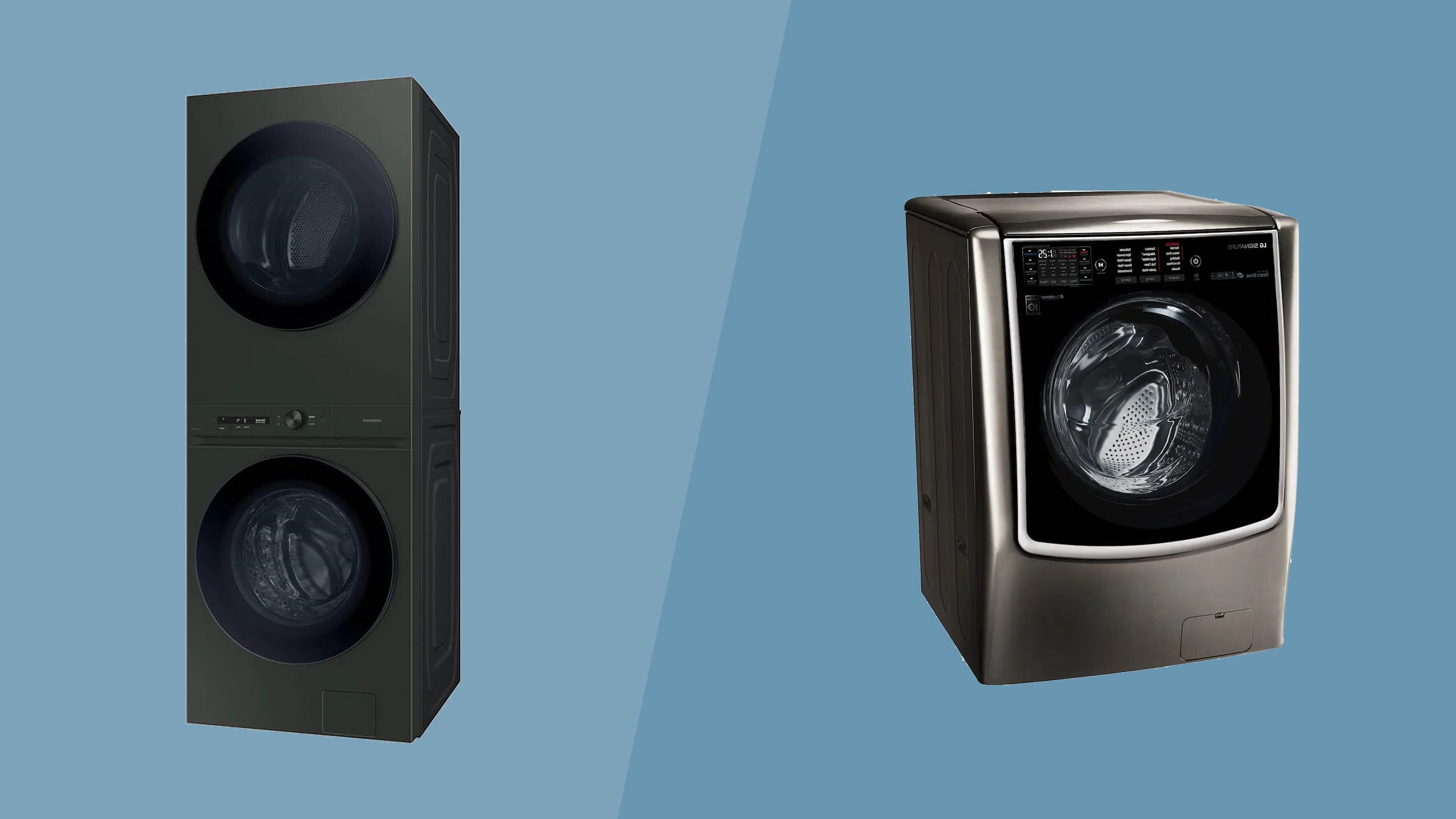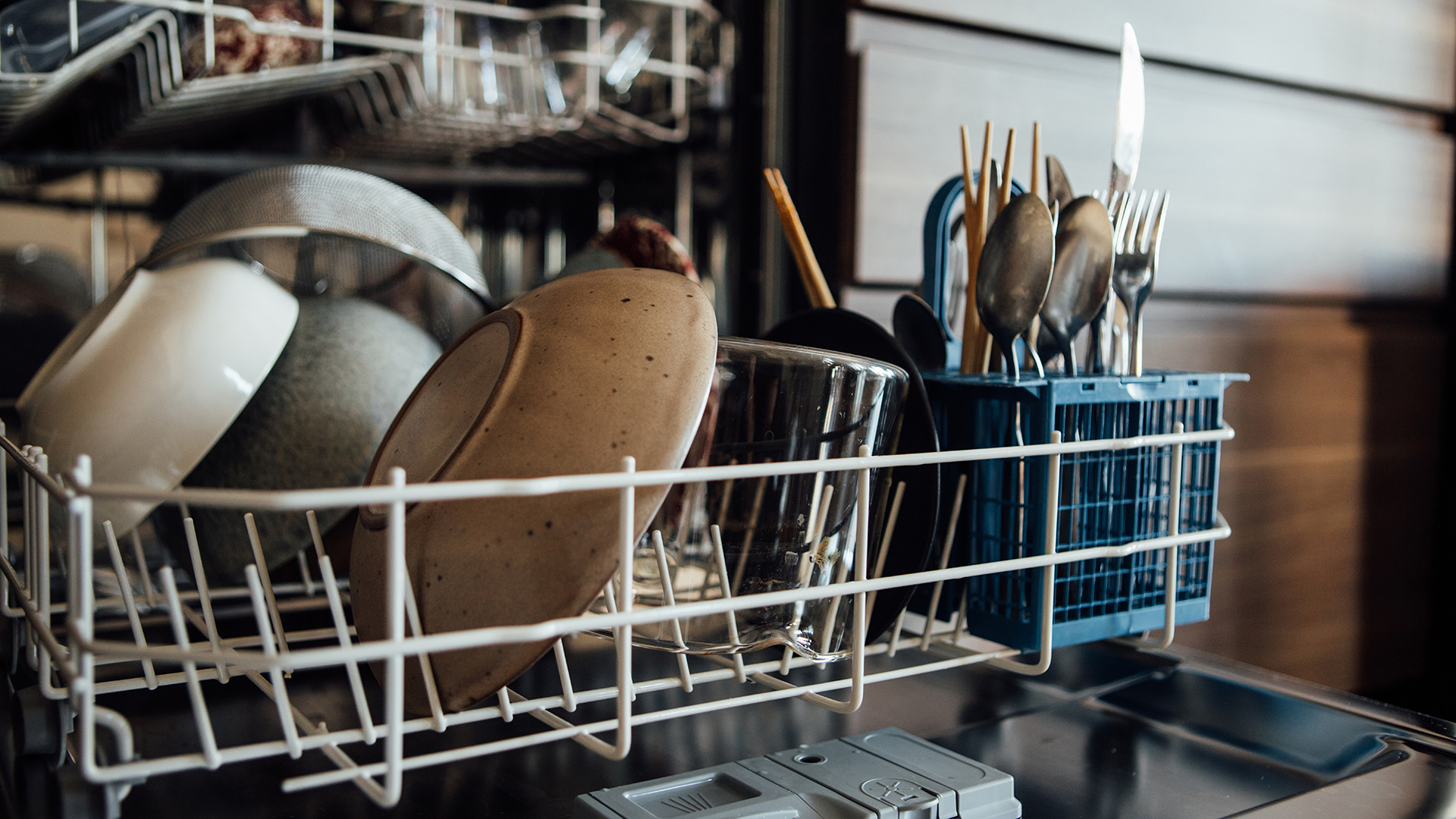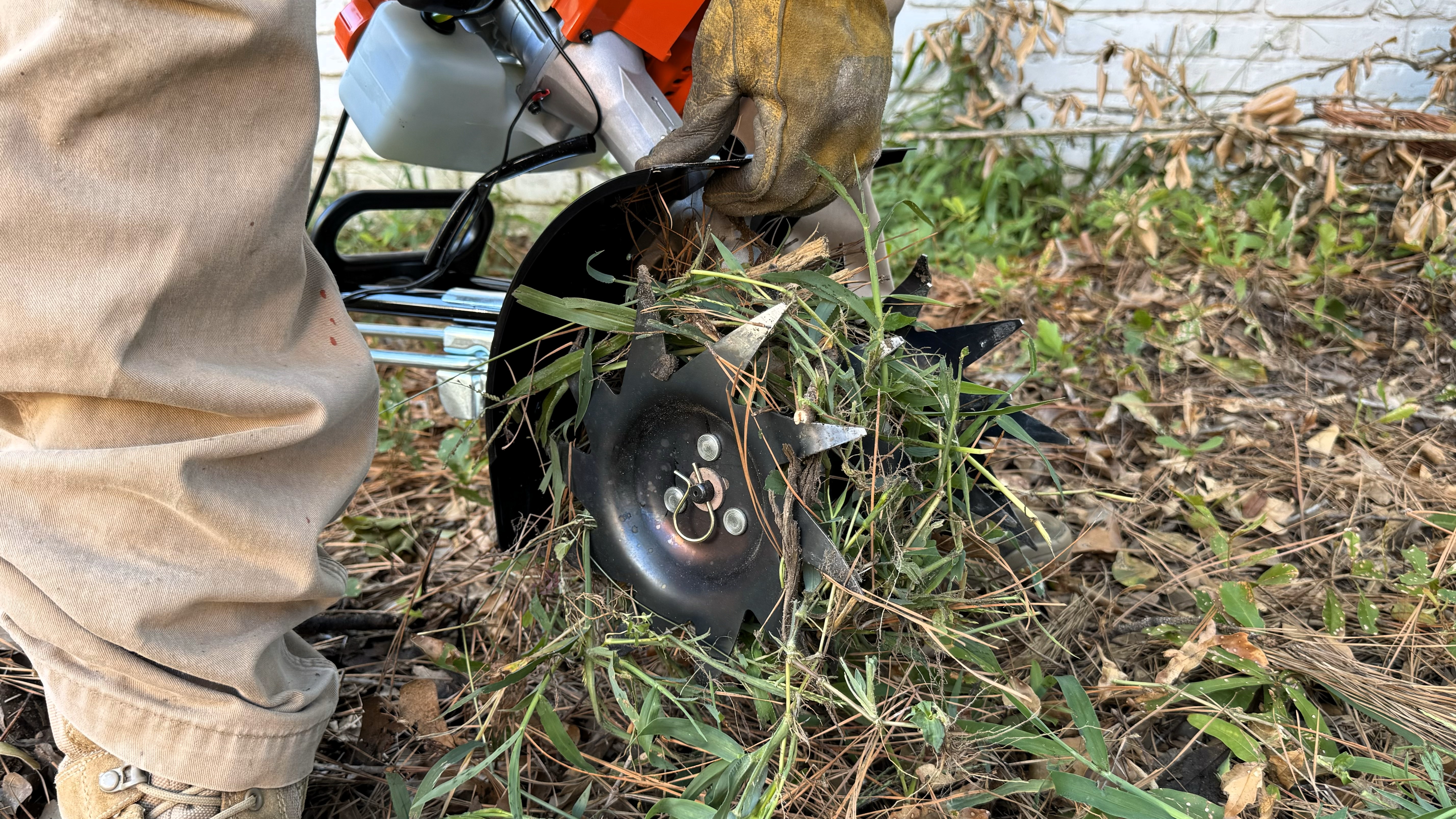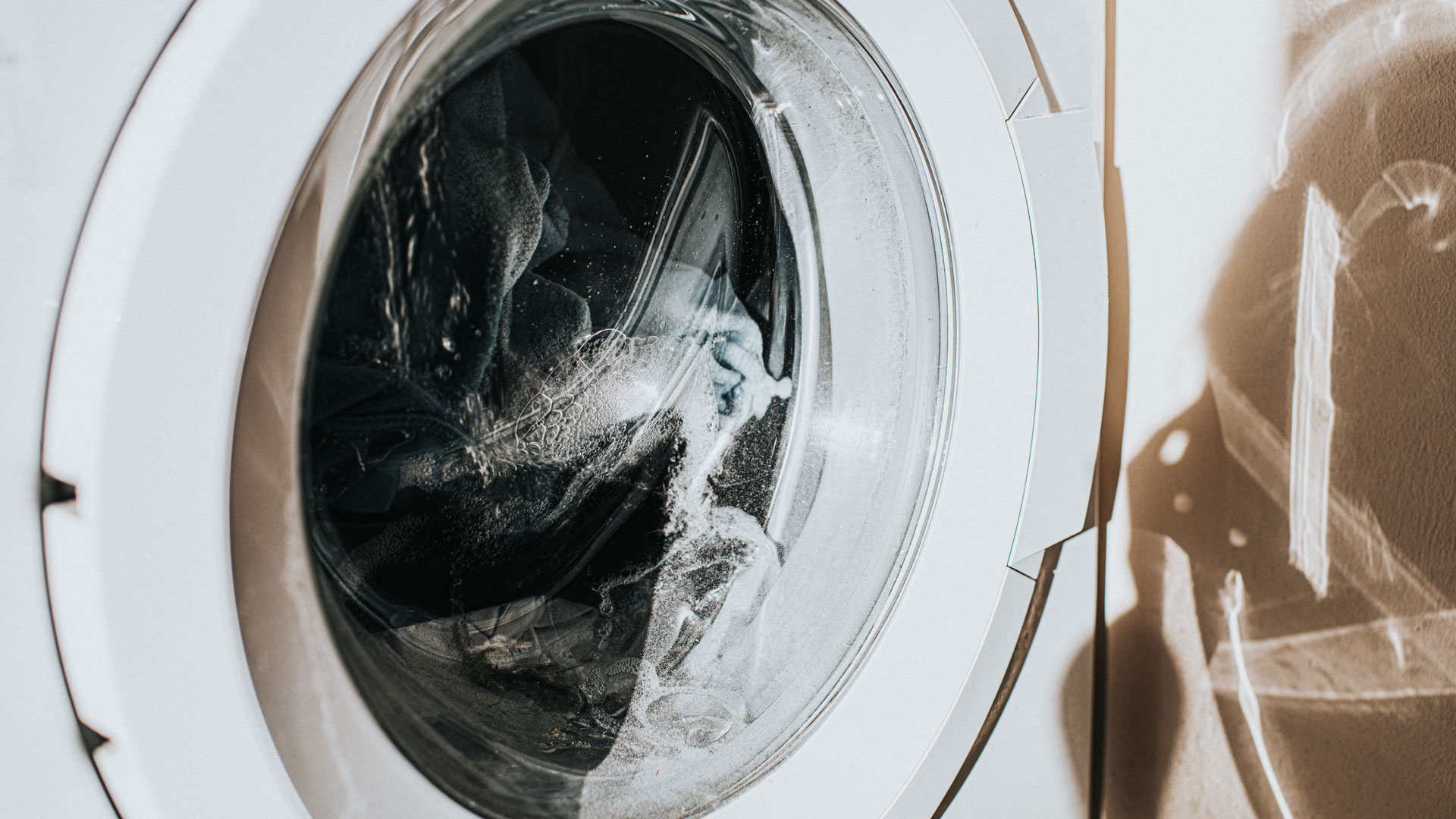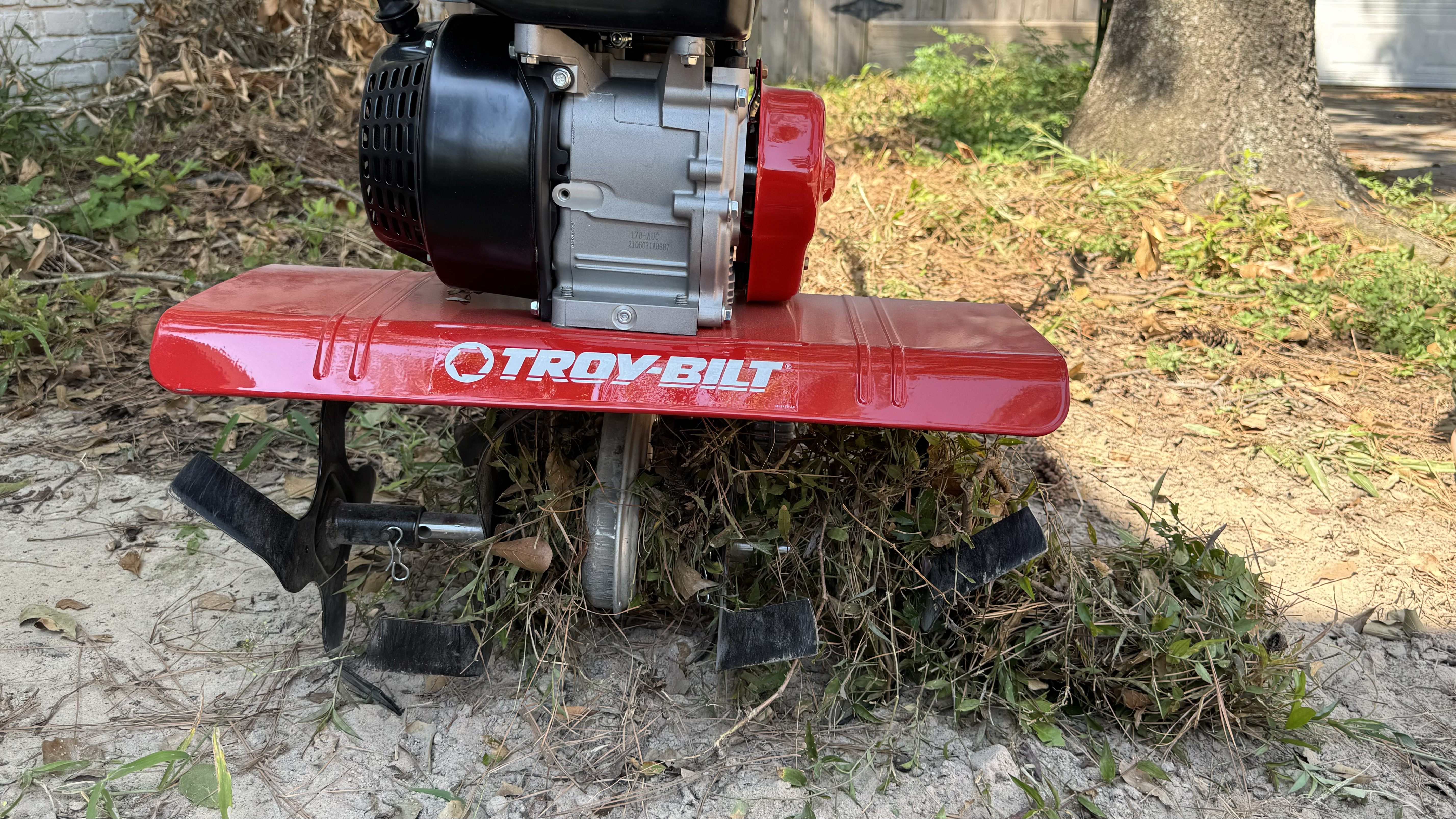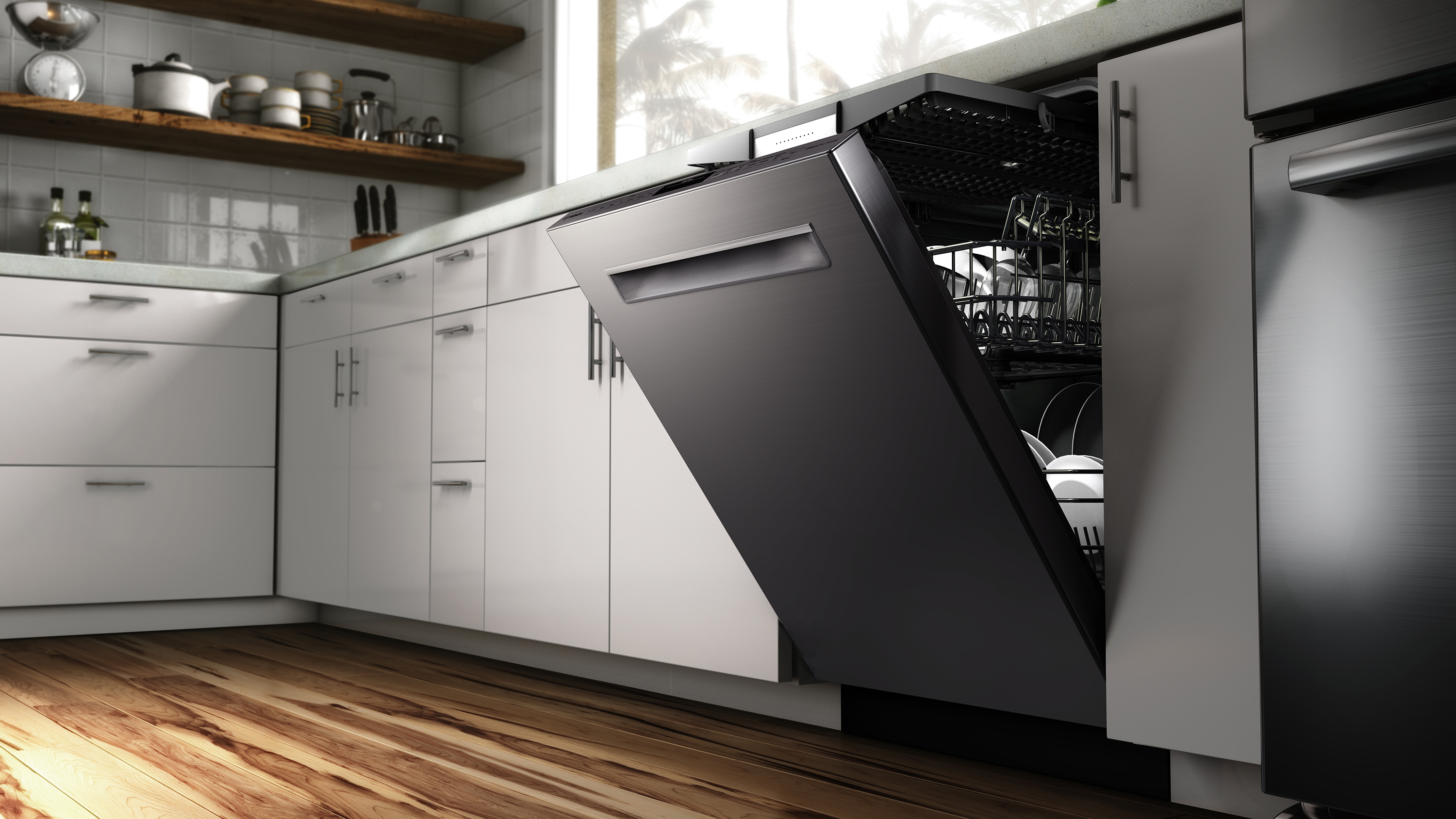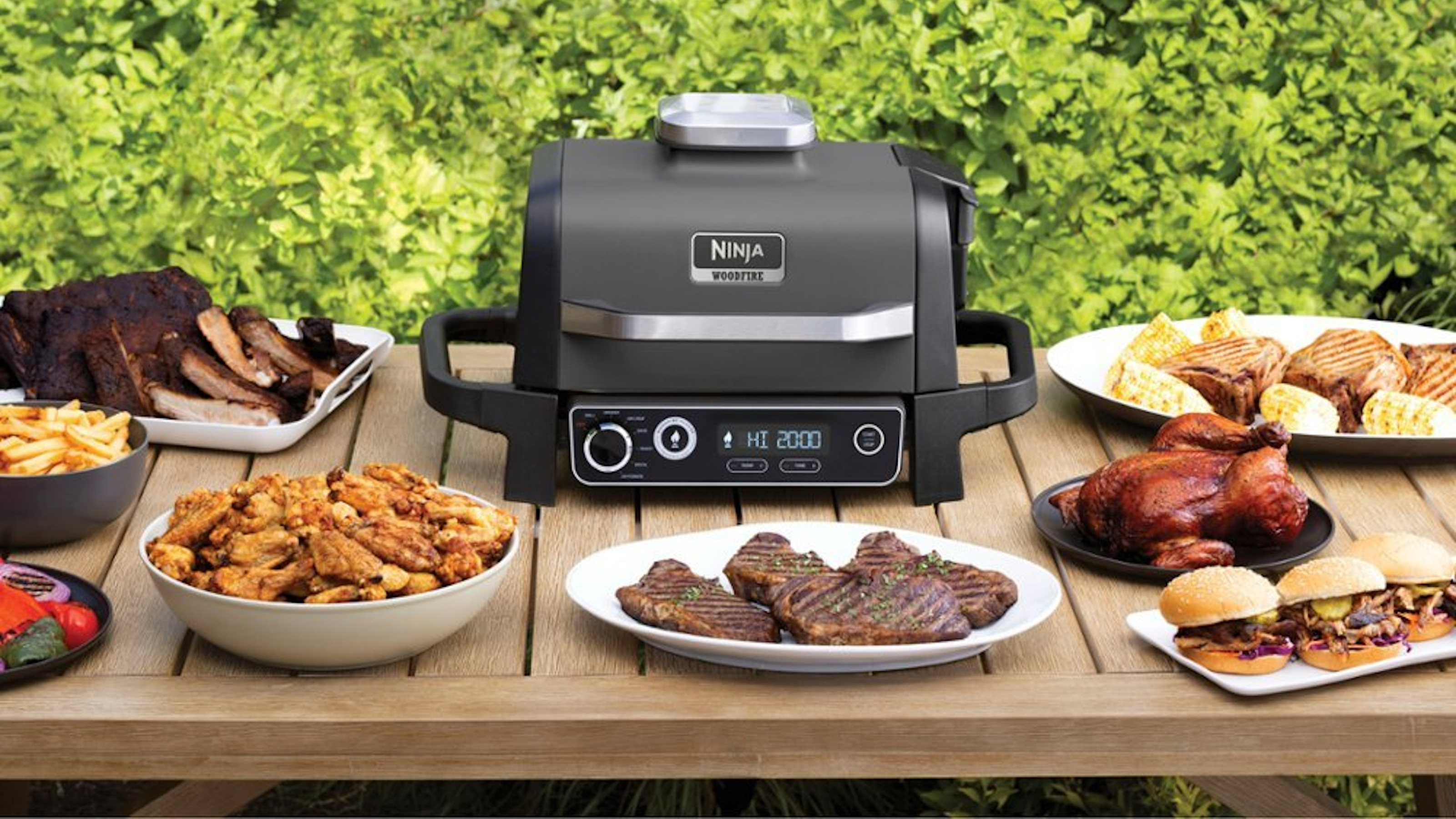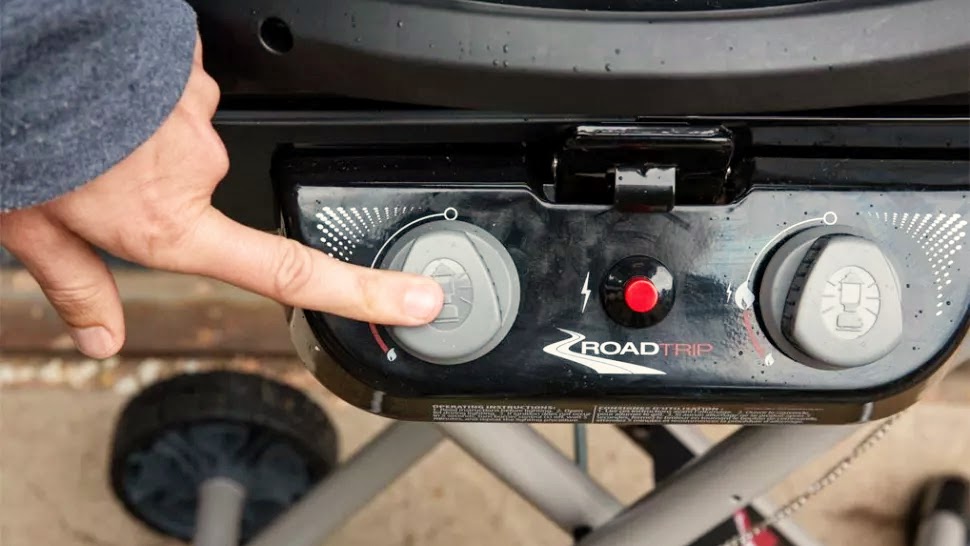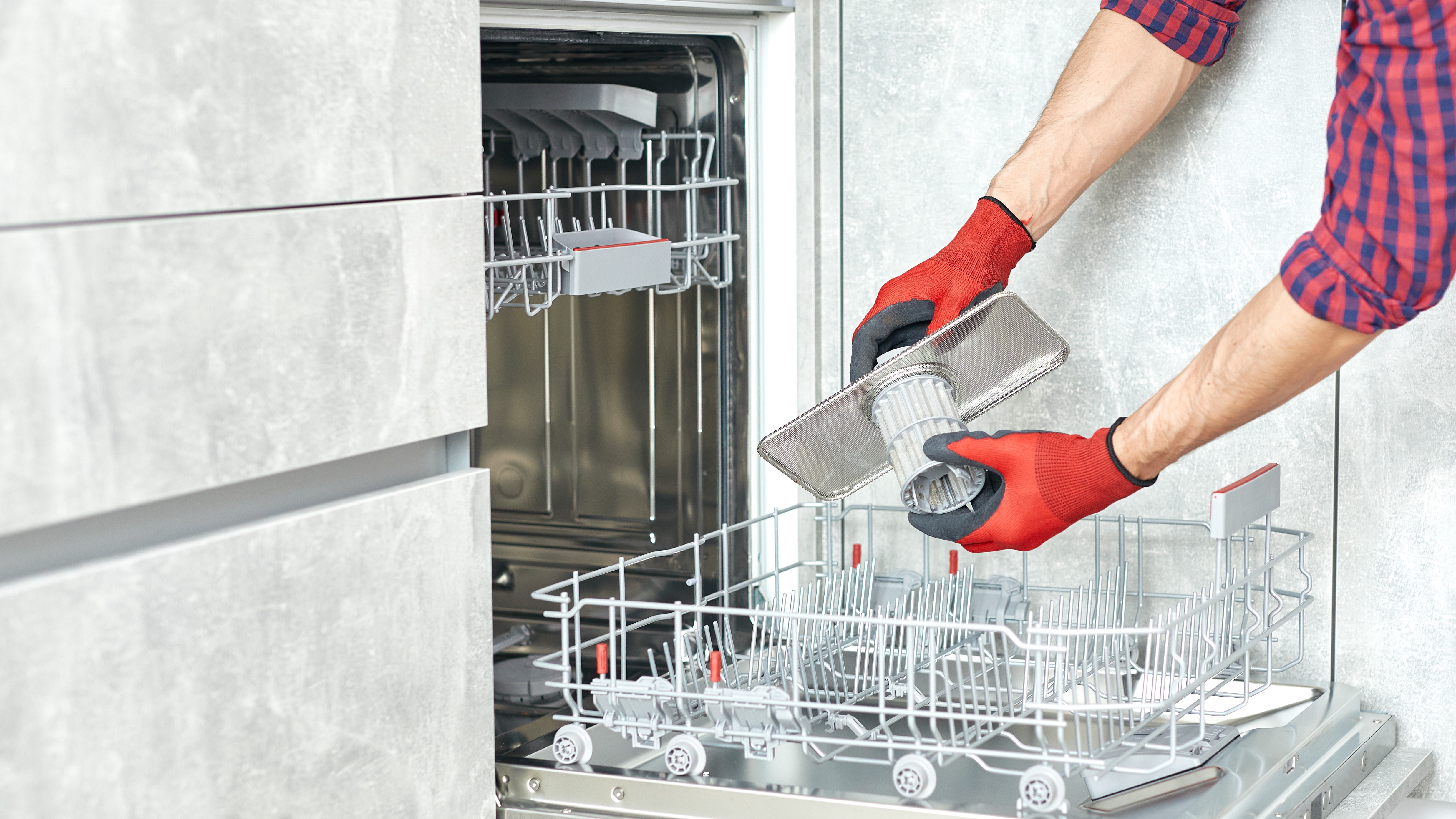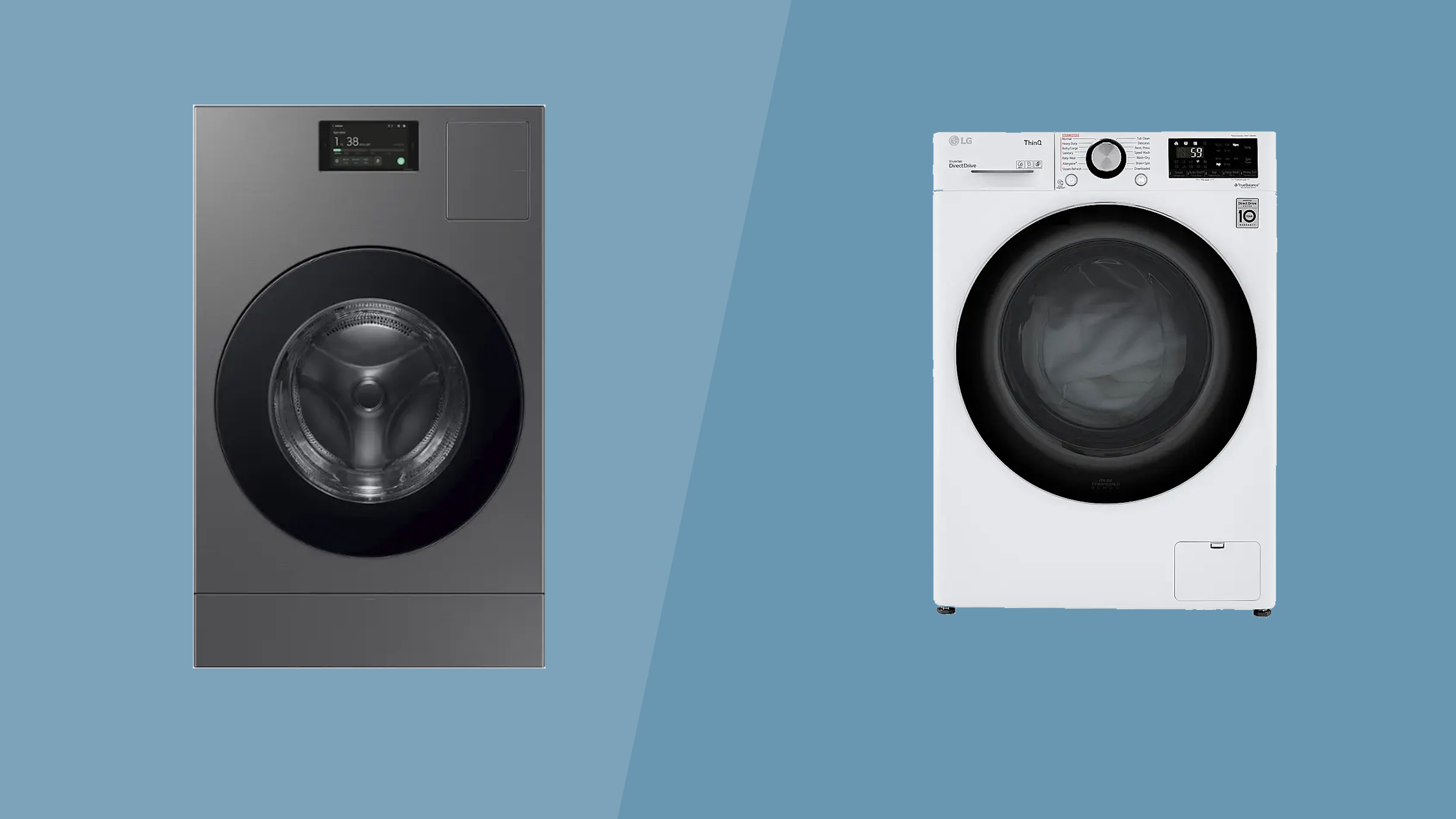When choosing your home's laundry setup, you have two main options: buy a separate washer and dryer or one of the best washer-dryer combos.
The answer comes down to capacity and budget, but it also depends on how you do your laundry and priorities. Do you value energy efficiency over time? Performance over convenience? And can you even fit two appliances in your home? That's before you even consider the best washing machine to choose or the best dryer brand.
In this comparison, I outline the pros and cons of both options and get expert insights from Grace Haly, Product Manager at Smeg, to help you make a more informed decision.
Washer dryer combo vs separate: Price and value
If budget is your main concern when deciding between separate appliances or buying a combo, you'll likely find the latter your best bet.
Standalone washers start at $500-$600 for models like Insignia's 3.7 and 4.1 Cu. Ft. top-loading washers, or you can pay as much as $4,000-$6,000 for more advanced, front-loading washers from Miele and LG.
Standalone dryers tend to be slightly cheaper across the board, and you can pay as little as $350 for compact, wall-mounted models from Black+Decker, anywhere between $500 and $2,000 for larger, freestanding dryers from brands like Kenmore and Samsung, or $4,000-$6,000 again for Miele.
By comparison, washer-dryer combos typically start at between $900 and $1,500 for combos from Equator and Summit, up to $2,500 for Samsung and GE models. You can buy washer dryers in either freestanding or built-in models.
Ongoing costs also vary. Washer and dryer combos generally have lower energy efficiency ratings, as Haly explains. “Standalone washing machines are A-rated for energy efficiency, while combo models are usually rated C for washing and D for the complete cycle.” This difference can result in higher bills, although it depends on your laundry needs and how often you use it. Additionally, combos tend to use more electricity and water, increasing costs.
Separate machines, conversely, are built for efficiency. Advanced washers and dryers have technologies like built-in moisture sensors and energy-efficient heat pump systems that reduce energy use and drying time. These features can save money in the long run and help to offset their higher initial cost.
Similarly, separate machines often justify their higher cost with improved performance and durability. They tend to last longer than combos because of fewer complex, dual-function components, and their larger drums mean more laundry can be done at once, reducing the overall time spent on chores. Families with a lot of laundries or people who prioritize energy efficiency will likely find separate machines to be the better value option.
Washer-dryer combos are instead best for smaller families, people with lighter laundry needs, or when space is at a premium. "If consumers are wanting to save space, then a combo machine would be the perfect solution, they are still going to achieve optimum washing and drying results without the need of two machines," says Haly. Even though their compact size and dual functionality mean their drum capacity is smaller than that of separate machines, this does make them ideal for apartments. Their ability to automatically switch between washing and drying saves time and effort, adding to their overall appeal.
Washer dryer combo vs separate: Features and functions
No matter the price, all the best washers, dryers, and combination appliances should offer a choice of cycles based on time, temperature, and clothing type. They should remove stains or moisture effectively, come with safety locks, and be intuitive. Even the cheapest washers from Insignia offer sensors that determine the ideal water level for each load and cycle end signal.
Beyond this, you can then pay extra for premium features. "Smeg machines have a brushless motor, which helps drive energy efficiency and makes the machines super quiet when in use," says Haly. "Another great feature to look for is a steam function which gets deep into fabrics to freshen up clothes and reduce wrinkles."
Washers like the GE GFW850SPNRS ($1,399) include advanced features such as steam cleaning, vents that help reduce odors, and Wi-Fi. It dispenses the detergent for you, only using the exact dosage for washed clothes. The GE Profile dryer ($1,399) can be linked to other smart GE washers, so you only need to choose a setting once. It then will sanitize clothes and have anti-static settings and wrinkle care.
With the top-end Miele washers and dryers, you're mainly paying for Wi-Fi and app controls, but you also get programmable cycles and can add any laundry items you forgot to the machine even if it's already started. Elsewhere, they clean clothes quicker and offer added hygiene features, including final rinses and disinfection modes.
On the other hand, washer-dryer combos tend to have fewer bells and whistles because a lot of innovation and technology is involved in what happens behind the scenes—namely, being able to transition between washing and drying automatically. However, some high-end models, again from the likes of GE, have intelligent detergent dispensers, app controls, specialty cycles, and odor-block.
Regarding usability, washer-dryer combos can take a little getting used to as you navigate the range of washing, drying, and combination features. Once you've mastered this, they will take away a lot of the laundry hassle. "Having a washer and dryer removes the need to transfer clothes from one machine to another," explains Haly. "Many models include programs that include a washing and drying cycle, so there's no need to return to the machine when the cycle has finished; it will automatically switch to drying." This also means you don't have to sync the cycles of two separate machines; you only have to select settings once.
Separate machines let you run washing and drying cycles simultaneously, which is a significant advantage for larger households. Standalone washers and dryers often have more specialized functions, like pre-soak, steam cleaning, or allergen cycles, which are impossible in combos.

Grace Haly is a Product Manager at Smeg UK, helping to head up the laundry, dishwashing and Smeg professional categories. At Smeg, Grace works with a wider team of product managers covering everything from small appliances to large appliances, brand collaborations and more. Prior to Smeg, Grace worked as a buyer for a range of established brands.
Washer dryer combo vs separate: Performance
Washer-dryer combos perform well for their size and convenience, but they don’t quite match the performance of separate machines.
During the drying cycle, combos often take longer due to their smaller drum size and reliance on condenser technology. They also typically have lower drying capacities than their respective washing capacities because “the capacity is based on the weight of the load, and because wet clothes are heavier than dry," says Haly. This means drying a full load in a combo may mean taking some clothes out and splitting it into two smaller loads.
In contrast, separate machines are designed for higher-level performance within their respective categories – they're designed to do one thing very well rather than trying to do multiple things less well. Washers have higher spin speeds, which remove more water during the washing cycle and reduce drying times. Dryers, especially ones with heat pump technology, dry clothes faster and more efficiently than combos. Both their larger drums and tailored programs make them more versatile, too.
"Standalone dryers tend to have a bigger drum size and can, therefore, take a greater amount of clothes," continues Haly. "Our standalone dryer models can hold 8kg or 9kg, whereas the combo model has a maximum drying capacity of 6kg. That said, if the drying capacity of a combo machine isn’t exceeded, the dryer will perform just as well as a standalone machine."
Finally, separate machines are generally more durable and easier to maintain. If one appliance breaks down, it doesn’t render your entire laundry system out of action, as with a washer-dryer combo. Combos can cost more to repair, too, because of the integrated components. The downside is that you have to keep two appliances clean rather than one and buy multiple insurance plans.
Washer dryer combo vs separate: Which is best?
When deciding between a washer-dryer combo and separate machines, the best choice depends on your space, budget, and laundry habits.
Washer-dryer combos offer compact convenience, handling washing and drying in a single appliance, while separate machines specialize in their functions and often (but not consistently) deliver better performance and efficiency.
Washer dryer combo vs separate: What the Experts Say
When choosing between a washer-dryer combo or separate appliances, Haly suggests first working out how much laundry you must do and your exact washing and drying needs.
"For larger households and families doing many washes a week, the separate machines are going to offer a larger capacity and the option to have a wash and dry load going simultaneously," she explains.
Yet, suppose a household has a lot of delicate items that can't be put in the dryer anyway. In that case, they're less likely to be affected by the smaller capacity with washer-dryer combos "as they will be removing items anyway."
Ultimately, she adds, it depends on your family's needs, and it’s good to research both options before purchasing rather than just taking their price or the brand name at face value.
Washer dryer combo vs separate: FAQs
What is the downside of a washer dryer combo?
While washer-dryer combos save space and provide the added convenience of not carrying wet washing around the house, they may not be suitable for all homes. Firstly, they have a smaller drying capacity compared to how much wet washing they can handle and to the drying capacity of standalone dryers.
If you wash a full load, you may need to remove part of it before starting the drying cycle. As a result, washer-dryer combos may not be ideal for families with significant laundry needs.
Additionally, washer-dryer combos are less energy-efficient than standalone machines. Haly says, "Having the drying built into the machine will always pull down the energy rating." This is mainly because the drying process in combos uses more water and electricity, which can increase bills and energy use over time.
Another downside is that combo drying cycles can take longer than standalone dryers. This is because they typically use a condenser system, which is slower than vented drying, and they operate at lower temperatures to protect the machine’s dual function. Smaller drums and limited airflow also play a part.
Does a washer dryer use a lot of electricity?
Washer-dryer combos generally use more electricity than separate machines, especially during drying. Although it's hard to compare like-for-like, the actual energy consumption depends on the specific model, its efficiency rating, and how often you use it.
Washer-dryer combos often rely on condenser drying technology, which uses electricity to heat air and condense the moisture from clothes into the water. This method is less energy-efficient than vented drying systems, which expel moist air outside, which means washer-dryer combos typically consume more energy overall.
Additionally, because drying cycles can take longer due to their smaller drum size and lower heat output, it extends the time it's in use, which increases electricity usage. For instance, a standalone dryer might complete a load in 30-40 minutes, while a combo could take 60-90 minutes for the same task.
Checking the machine's energy rating before purchasing is a good place to start.
